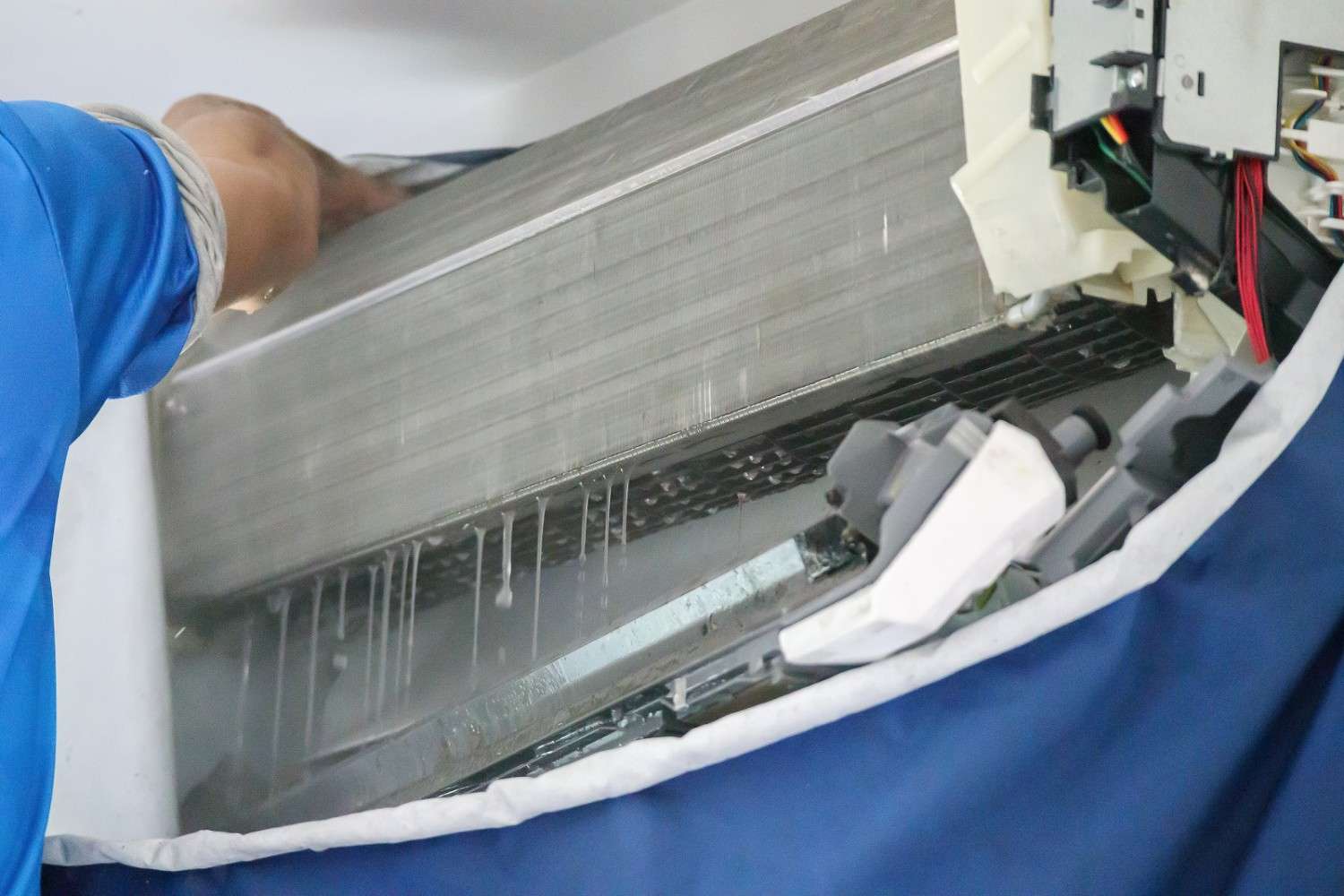A dirty air conditioner might still cool your room, but it’s working much harder than it should. Over time, dust, pollen, and grime build up on the coils, blocking heat transfer and forcing the system to use more energy. Learning how to clean air conditioner coils isn’t just about maintenance—it’s about saving money, improving performance, and extending your unit’s life.
In this guide, I’ll walk you through professional yet easy-to-follow steps for cleaning both indoor evaporator coils and outdoor condenser coils safely.
Why Cleaning AC Coils Matters
Your air conditioner relies on two main sets of coils:
- Evaporator Coils (inside): Absorb heat from the air inside your home.
- Condenser Coils (outside): Release that heat outdoors.
When these coils get clogged with dirt or debris, heat transfer slows down, making the compressor work harder. The result?
- Higher electricity bills
- Reduced cooling efficiency
- Shorter AC lifespan
- Risk of system freezing or overheating
Routine cleaning keeps everything running smoothly and reduces costly breakdowns.
Tools and Materials You’ll Need
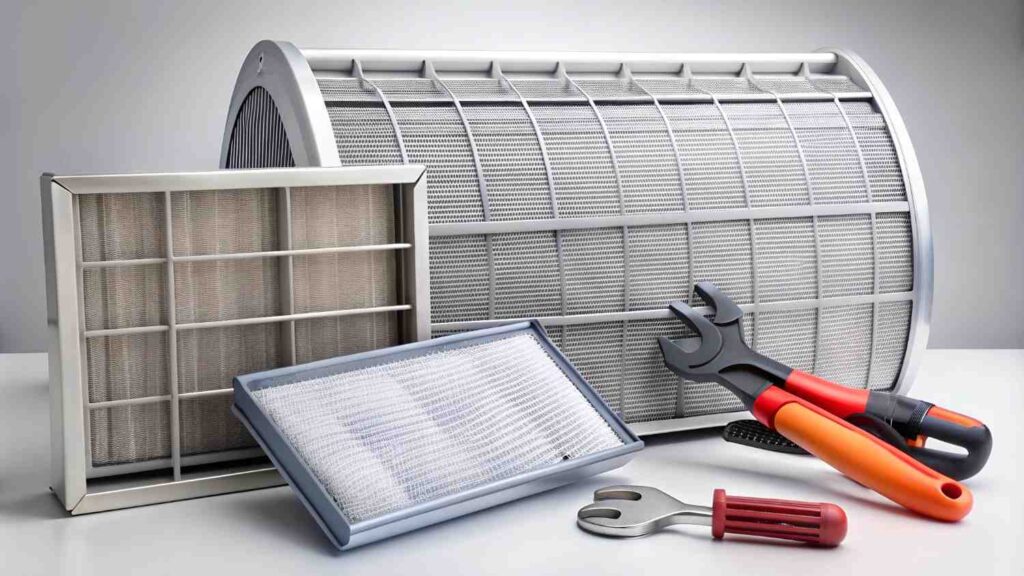
Before diving in, gather these essentials:
| Tool / Material | Purpose |
| Screwdriver | To remove the AC panel or casing |
| Coil cleaner or mild detergent | Breaks down dirt and grease |
| Spray bottle or garden sprayer | Evenly applies cleaner |
| Garden hose with nozzle | Rinses condenser coils gently |
| Fin comb | Straightens bent fins for airflow |
| Gloves and safety goggles | Protects from debris and cleaner |
| Soft brush (optional) | Helps loosen stubborn dirt |
Having everything ready before starting ensures a smooth, uninterrupted cleaning process.
Step-by-Step: How to Clean Air Conditioner Coils
Let’s break this process down for both indoor and outdoor units.
1. Power Off the Unit
Before touching anything, turn off the power at the breaker or disconnect switch.
This prevents electrical shock and keeps you safe while working around electrical components.
2. Access the Coils
For the outdoor condenser, remove the top or side panels to expose the coils. Keep the screws in a small container so you don’t lose them. For the indoor evaporator coil, open the access panel (usually near the blower fan inside your air handler). If the aluminum fins look bent, gently straighten them with a fin comb to restore airflow.
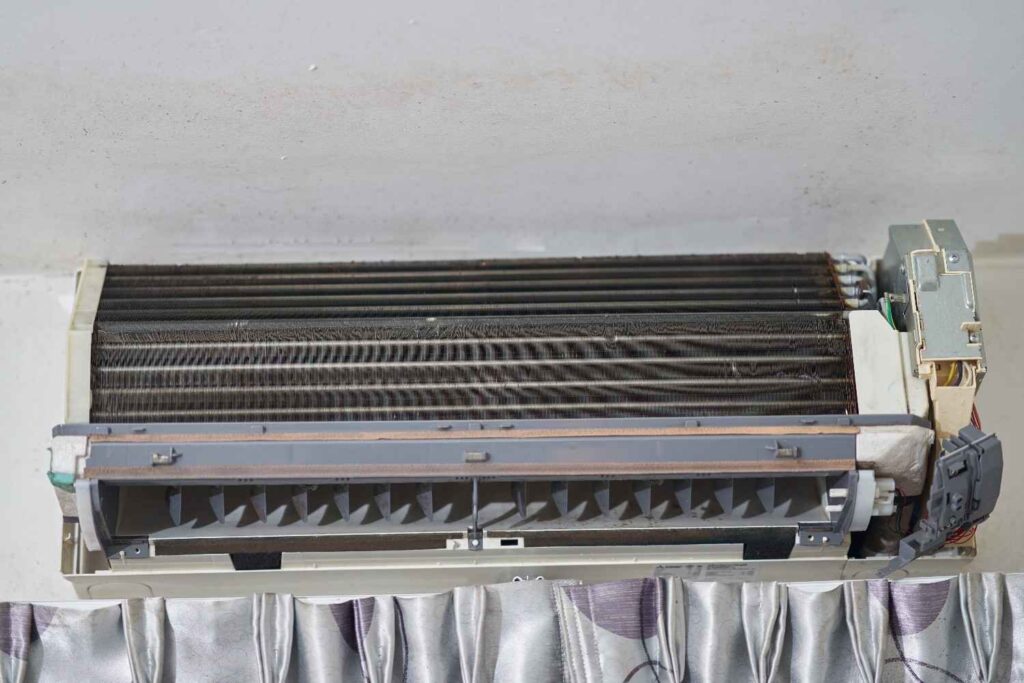
3. Clear Loose Debris
Before applying any cleaner:
- Remove leaves, twigs, or dirt around the outdoor unit.
- Use a soft brush or dry cloth to wipe off dust buildup.
This step prevents excess debris from spreading when you apply the cleaning solution.
4. Apply Coil Cleaner
Now comes the main part of learning how to clean air conditioner coils effectively. You can use either a commercial foaming coil cleaner or a homemade solution of mild soap and water.
Here’s a quick comparison to help you choose
| Type of Cleaner | Pros | Cons | Ideal Use |
| Foaming Coil Cleaner | Quick, powerful, dissolves heavy grime | Slightly more expensive | Outdoor condenser coils |
| Mild Soap Solution | Gentle, affordable, eco-friendly | May need extra scrubbing | Indoor evaporator coils |
| Vinegar & Water Mix | Natural, safe for frequent cleaning | Less effective for thick buildup | Maintenance cleaning |
Spray the cleaner evenly over the coil surface. If using a foaming cleaner, let it sit for 5–10 minutes so it can loosen the dirt.
5. Rinse the Coils Thoroughly
For outdoor coils, use a garden hose with a gentle, downward spray to rinse off the cleaner. Start from the top and work your way down. Avoid using a pressure washer—it can bend the fins and cause permanent damage.
For indoor coils, lightly wipe or mist them using a spray bottle of clean water. Never hose down indoor components to avoid electrical issues.
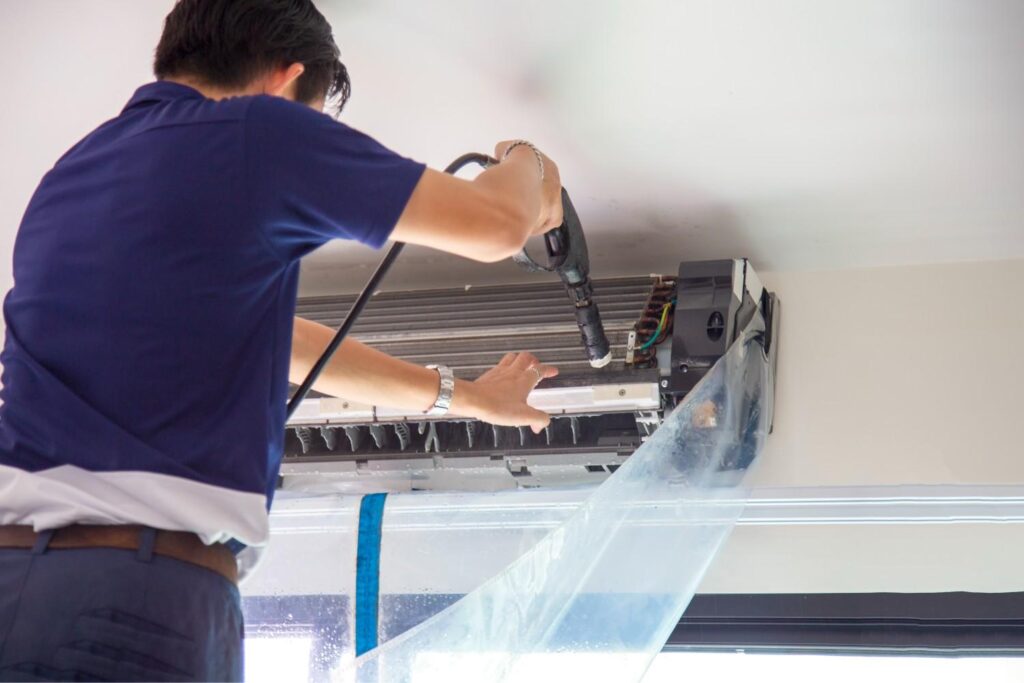
6. Dry, Reassemble, and Test
Allow the coils to air dry completely before reattaching the panels. Once dry, restore power and turn on the unit.
Check that:
- Airflow feels stronger.
- The unit cools efficiently.
- There are no strange noises or leaks.
If everything runs smoothly, you’ve successfully cleaned your AC coils like a pro.
Professional Cleaning vs. DIY: Which Is Better?
While cleaning your coils yourself can save money, there are times when professional service is worth it—especially if your coils are severely clogged or you notice mold buildup.
| Situation | DIY Cleaning | Professional Cleaning |
| Light dust or dirt | Effective | Not necessary |
| Heavy grime or grease | Possible, but time-consuming | Recommended |
| Mold or biological growth | Risky to handle | Requires expertise |
| Annual maintenance | If comfortable | Once a year |
Most experts recommend a professional inspection once a year and a DIY cleaning every 3–6 months to maintain optimal performance.
How Often Should You Clean Air Conditioner Coils?
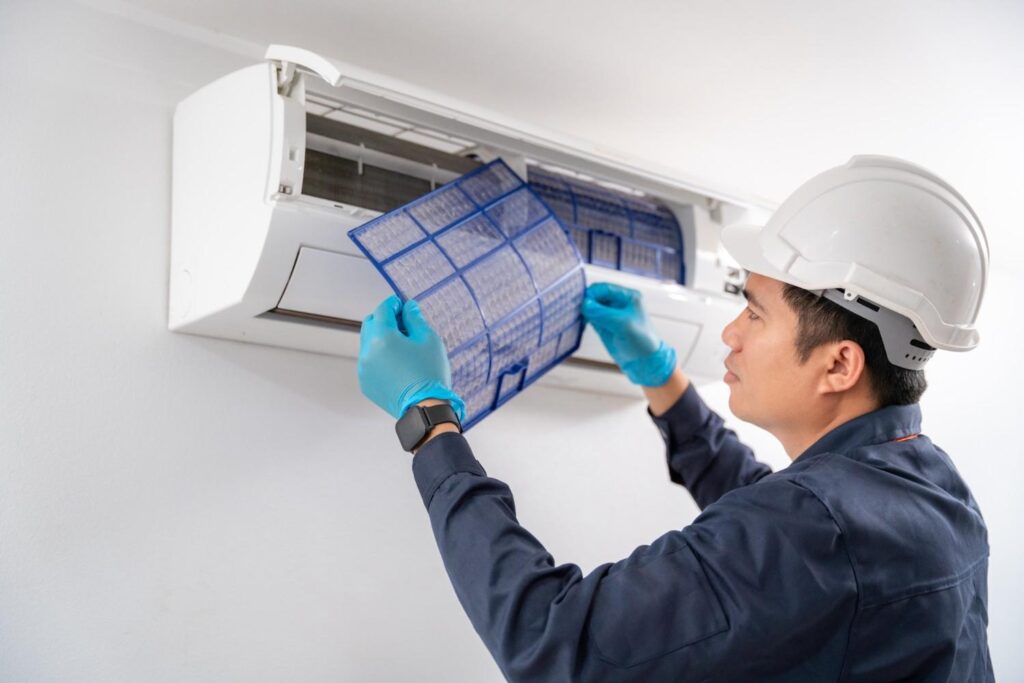
The ideal frequency depends on your environment:
- Every 3 months if you live in a dusty or coastal area.
- Every 6–12 months for cleaner, indoor environments.
- Always clean before summer when the unit works hardest.
Signs Your Coils Need Cleaning
Watch for these red flags that indicate your coils may be clogged:
- Reduced cooling or longer run times
- Higher electricity bills
- Frost buildup on indoor coils
- Warm air blowing from vents
- AC unit making unusual noises
If you notice multiple signs, don’t delay—dirty coils only worsen efficiency over time.
Pro Tips for Best Results
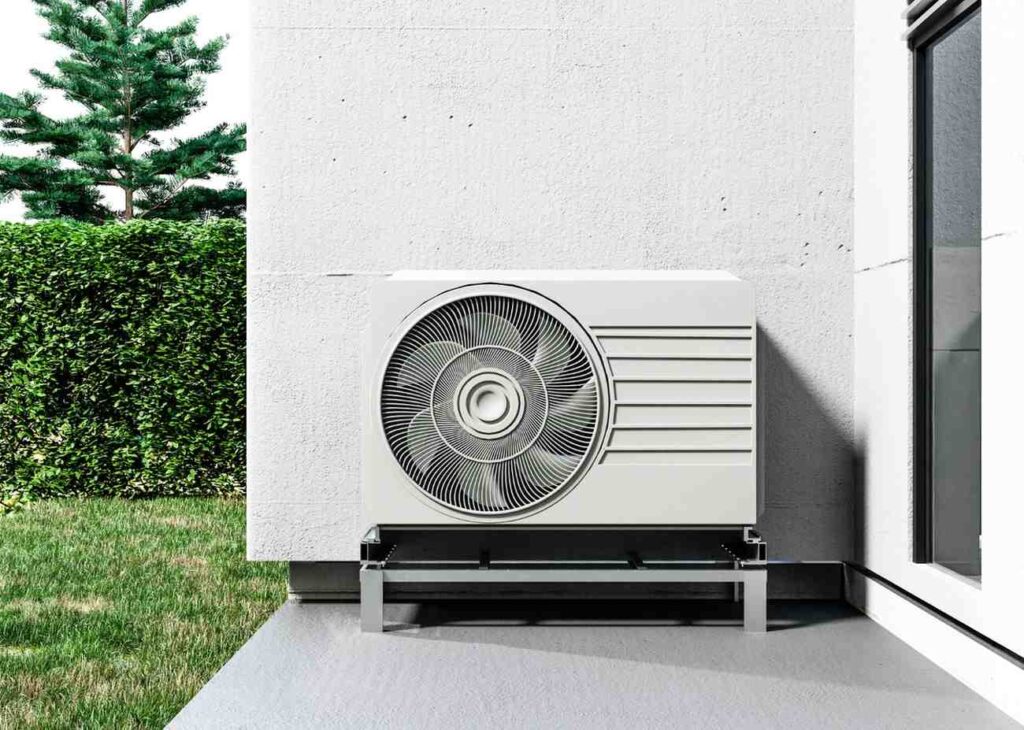
- Use gentle water pressure: Too much force can damage fins.
- Keep surroundings clear: Trim plants and remove debris near outdoor units.
- Change filters regularly: Clogged filters cause dirt to collect faster on coils.
- Check drainage: Ensure the condensate line is clear to prevent mold and leaks.
- Use a fin comb carefully: Straight fins improve airflow and prevent motor strain.
A little preventive care goes a long way in ensuring your AC runs smoothly year-round.
Also Read: types of plungers
FAQs About Cleaning Air Conditioner Coils
Q1. Can I use household bleach to clean AC coils?
No. Bleach can corrode metal components and damage the coils. Stick with commercial coil cleaners or a mild detergent and water mixture.
Q2. What happens if I never clean my AC coils?
Over time, dirt acts as insulation, trapping heat and forcing your system to work harder. This leads to higher bills, poor cooling, and potential compressor failure.
Q3. Can I clean the coils without removing the panel?
Surface dust can be removed without opening panels, but for thorough cleaning, accessing the coils directly is necessary.
Q4. How long does coil cleaning take?
DIY cleaning usually takes about 30–60 minutes, depending on your AC type and how dirty it is.
Q5. Should I turn off my thermostat too?
Yes, turn off both the breaker and thermostat to ensure no accidental system operation while cleaning.
Keeping Your AC in Top Shape
Now that you know how to clean air conditioner coils, make it part of your seasonal maintenance routine. Clean coils mean cooler air, lower energy use, and fewer repair calls.
If you ever encounter stubborn buildup or reduced cooling even after cleaning, schedule a professional inspection—it’s a small investment for long-term performance.
A clean system doesn’t just cool better—it lasts longer. Treat your air conditioner well, and it’ll return the favor every summer.





